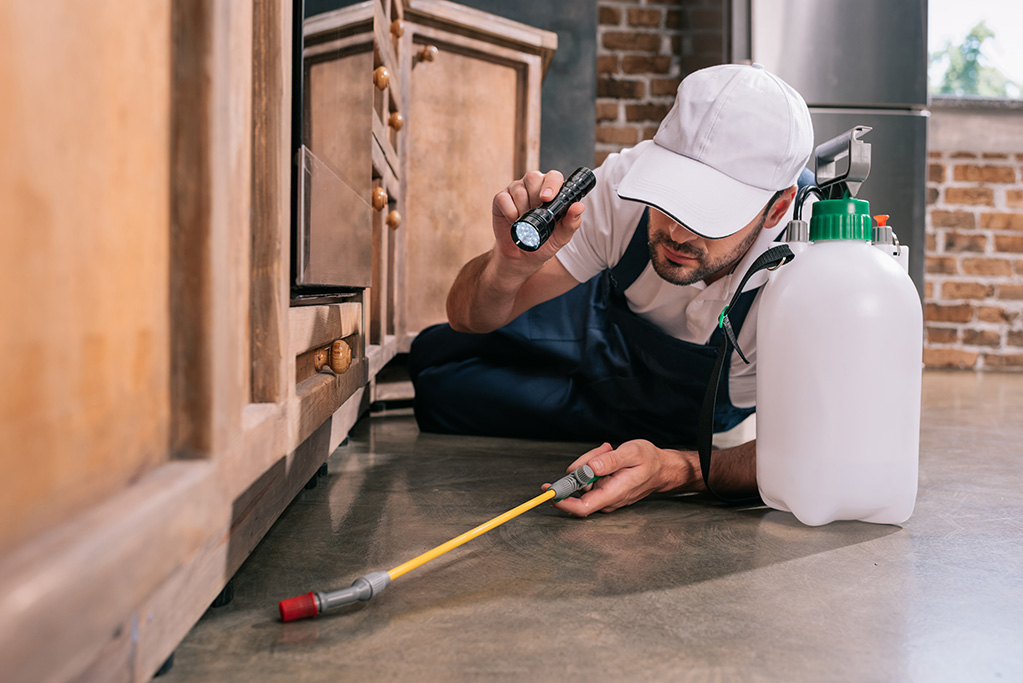Pests are a hassle and a health hazard. They can damage your home, cause asthma and allergies, and trigger bacteria.
When choosing a pest control service, ask questions about their experience and methods. Resources to check include the Better Business Bureau, online reviews, and social media. Then verify their license status with your local licensing board.
Pest Identification
The first step in integrated pest management (IPM) is to accurately identify a problem. This includes identifying the type of pest, its behavior and life cycle, and the conditions that create the pressure for pest infestations. Incorrect pest identification is the most common cause of control failure, and it’s important to know what you are dealing with before making a treatment decision.
In addition, a pest’s physical appearance can vary significantly during different stages of its life cycle. It can also change with the time of year. This is especially true for insects. For example, a weed seedling looks very different than a mature plant. Accurate pest identification can help determine which IPM strategies are most effective, such as trimming weeds before they flower and seed or spraying them with a herbicide to prevent further spreading.
Another essential element in a successful IPM program is staff training. Everyone from the c-suite to the loading dock should be aware of and understand how to identify red flags that signal an underlying or growing pest problem. This might include things such as finding one cockroach in a kitchen, noticing flies buzzing around garbage disposal areas or seeing little piles of feces in the lawn.
Traps, both with and without pheromone baits or food, should be placed throughout collection areas and checked regularly. A significant uptick in trap contents or pest sightings should trigger an investigation into the possible causes of the increase.
A pest management specialist can conduct a site inspection to find pest issues and understand the factors that create pest pressure. This is usually done as part of a communication with the customer where the customer defines the action threshold and what level of pests they can tolerate. For example, some customers may accept one cockroach in their game room, but not in their kitchen. Others might not mind a little clover in the lawn, but not termites.
It’s a good idea to clean up and remove clutter before a pest control specialist arrives. This will make it easier for them to spot pests and other signs of infestation such as chew and bite marks, feces or egg laying.
Inspection
After the pest identification process, a pest control specialist will carry out a thorough inspection of the property. This includes examining areas like floorboards, baseboards and walls for any signs of damage caused by the pests. The inspector will also look for a lot of other things, depending on the type of pest that has invaded the home. These could include cockroaches, rodents and termites. Termites are especially destructive and can cause structural problems in homes, so the pest control inspector will be looking for evidence of this when checking the house.
They will look for any traces of wood-destroying pests, including discarded wings and droppings, tunnels under foundations and around doors and windows and other signs of infestation. They will also examine the attic, crawl space and basement of the structure to check for any evidence of pests living there.
When a pest problem is detected, the pest control specialist will recommend treatment options. This may be as simple as spraying the outside of a building with a granular insecticide, or it may require a more involved termite baiting system. A pest control expert should explain all the treatments available and the pros and cons of each. They will also advise the homeowner on preventative measures, such as storing food in sealed containers and keeping trash bins tightly closed. They should also make the owner aware of any moisture problems that could attract pests, such as clogged drains and damp basements.
A pre-purchase pest inspection is one of the best investments a buyer can make, because it helps them to avoid unpleasant surprises after moving in. A pest infestation isn’t just a nuisance; it can also cost the homeowner a lot of money to get rid of them and repair any damage caused by the pests. Pest inspections can also help buyers to negotiate the price of a home, if the seller can prove that there is no existing pest problem. Buyers should also ask the real estate agent to recommend a reputable pest control company. The inspector should be licensed by the city or state and have proof of liability insurance.
Treatment
Pest Control Services In Celina TX focus on eliminating unwanted insects, animals and plants that pose a threat to human health, property or welfare. The methods used for pest control include exclusion, quarantine, eradication, mechanical removal and chemical control. Integrated Pest Management (IPM) practices are often employed, which involves inspecting and monitoring the environment as well as taking preventive measures to eliminate pests before they become a problem.
Regular maintenance visits from a Pest Control Services In Celina TX can help protect your home or business from unwanted pests, and keep them away for good. Preventive treatments such as cleaning, caulking and screening can make your home or business less attractive to pests. It’s also important to remove food sources such as trash, pet feces and compost piles from around your home or business.
When hiring a pest control service, it is important to choose a licensed, insured and knowledgeable provider. Inquire about how long the company has been in business and what type of pests it specializes in treating. Check online reviews and customer feedback about the company. Also, find out what type of products and equipment the company uses to minimize harm to the environment.
Prior to the specialist arriving, you should clear any clutter from areas that they will need access to. This includes items in closets, attics, garages, kitchens and bathrooms. This will provide better visibility of any existing problems and allow the specialist to more easily locate pest hiding places. You should also keep pets and children away from areas where pesticides will be applied.
The specialist may recommend a variety of prevention strategies. These may include removing shelter from the outside of your home, storing food in sealed containers and repairing leaky faucets. It is also a good idea to store garbage in tightly-covered cans and regularly dispose of waste in dumpsters or other outdoor facilities.
Prevention is a crucial part of pest control. It is much easier to keep pests out than to get them to leave once they’re inside your property. There are three goals for pest control: suppression – reducing the number of pests to an acceptable level; eradication – destroying an entire pest population; and prevention – keeping a nuisance pest out of your establishment in the first place.
Prevention
Although maintenance crews and building occupants take great care to keep facilities clean and sanitary, pests can still find their way inside. Pest control professionals work with clients to prevent problems before they arise, helping to reduce the likelihood of infestations and damage. Preventative treatment options may include barrier treatments to prevent pests from entering a structure, monitoring to identify potential problems and providing advice on how to make a facility less inviting to pests.
Prevention services are a great choice for those looking to avoid costly and disruptive pest treatments, which can be especially important in areas where the presence of a pest species has been banned or discouraged. While pesticides are a common part of any pest control program, they should be used sparingly and only after other methods have been exhausted. Pesticides should also be applied in a manner that minimizes the chance of exposure to humans and other pets.
A professional pest control service can help to eliminate infestations, often in a shorter time than the homeowner could manage on his or her own. Pest control professionals have the training and equipment necessary to quickly locate and treat all areas affected by an infestation, reducing the risk of damage and the need for further treatments.
Some pest infestations are more serious than others, and in some cases eradication is the only option. This can be particularly true for pests that pose a health threat to people, such as rodents and birds, or have the potential to damage property, like roaches or fire ants.
For more serious infestations, a professional pest control company can offer a range of reactive treatments to quickly and thoroughly address the problem. This can include trapping, baiting and the use of specialized equipment to reach hard-to-reach areas where pests hide. When possible, pest control experts will also try to identify the source of an infestation and eliminate it, rather than simply treating the symptoms. This approach can save both money and stress over the long term. This is why it’s always better to enlist the help of a qualified pest control expert in the first place.


